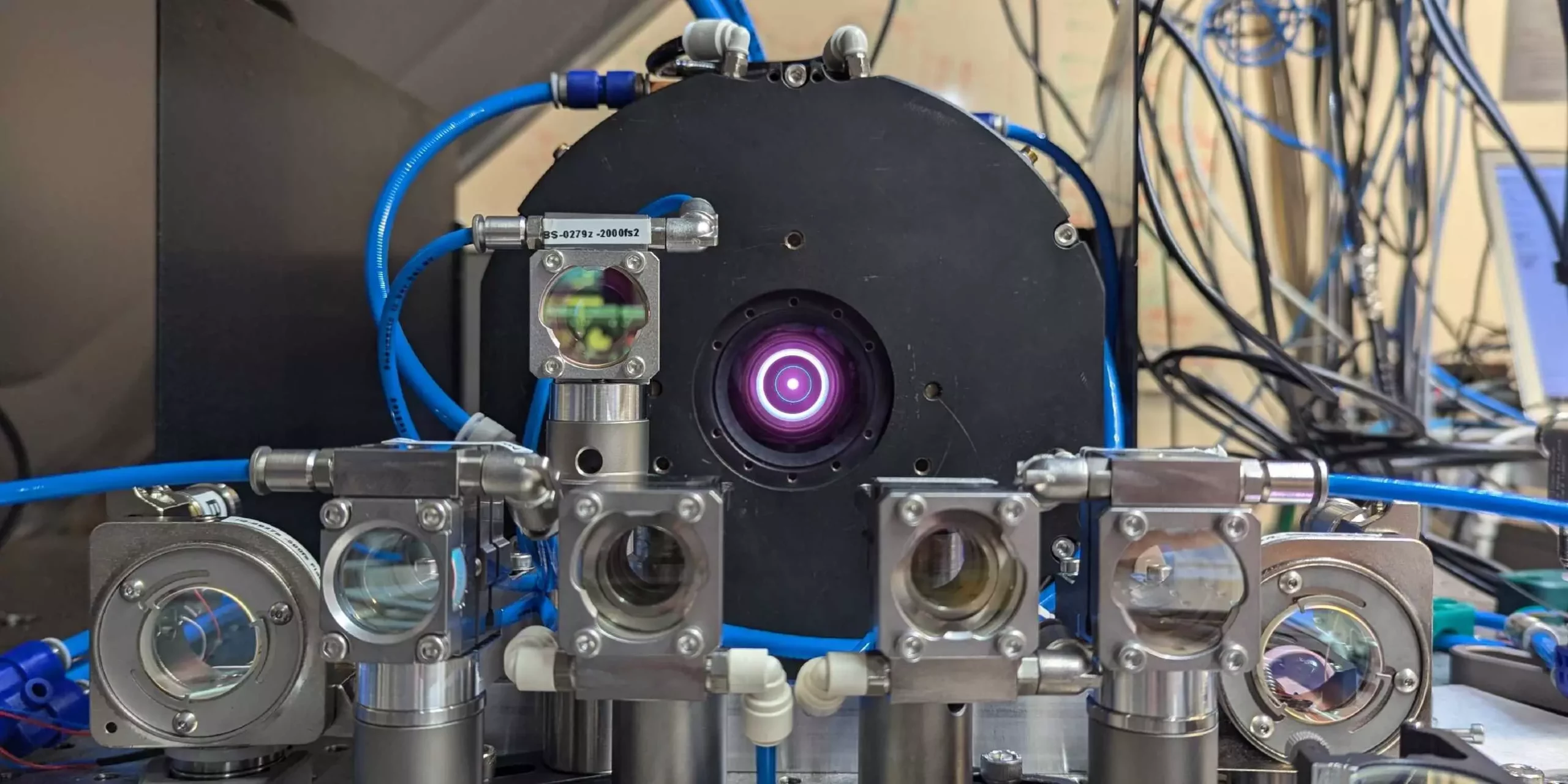Lasers are often associated with streamlined beams of concentrated light, manifesting their utility across various scientific and industrial applications. However, the realm of lasers extends beyond merely continuous beams; there’s an urgent demand for short, powerful pulses that fulfill experimental and material processing needs. In the realm of cutting-edge research, a recent achievement at ETH Zurich underscores this necessity. Spearheaded by Professor Ursula Keller and her team at the Institute for Quantum Electronics, researchers have successfully developed a laser oscillator that generates unprecedented pulse power. This breakthrough signifies a significant advance in laser technology, setting new benchmarks for both intensity and efficiency.
With an impressive average output of 550 watts, Keller’s team has broken previous records by over 50%. The researchers managed to produce pulses lasting less than a picosecond—one millionth of a millionth of a second—at staggering rates of five million pulses per second. It’s essential to process these figures; the peak power achieved is around 100 megawatts, sufficient to energize 100,000 vacuum cleaners momentarily. Their findings, published in the esteemed journal *Optica*, showcase how such capabilities could vastly enhance scientific inquiries, ranging from materials science to quantum mechanics and high-speed imaging.
The scientific pursuit over 25 years has led the Keller group through numerous challenges, often marred by setbacks that damaged critical laser components. Each technical hurdle presented an opportunity for growth, revealing new methodologies that enhance the reliability of short-pulsed disk lasers. These lasers, characterized by their compact 100-micrometer thick crystal disks laced with ytterbium, are pivotal in advancing industrial laser applications.
Two key innovations from this latest research enabled the breakthrough in both pulse length and power. Moritz Seidel, a Ph.D. student in Keller’s laboratory, explains that the team utilized a unique mirror setup that enables light amplification without destabilizing the laser system. This configuration allows the light to traverse the disk multiple times before exit, maximizing intensity efficiently.
The introduction of a specialized semiconductor mirror—the Semiconductor Saturable Absorber Mirror (SESAM)—has revolutionized how the system generates pulses. Unlike traditional mirrors, the SESAM’s reflective properties are adjustable according to the light’s intensity. Consequently, this variable reflectivity facilitates the transition from continual beam to robust pulses, concentrating light energy into a shorter duration, which amplifies its intensity. This innovation significantly reduces noise typically generated through separate amplification systems, a critical advancement for precision measurements.
Furthermore, the construction of the SESAM mirror posed technical challenges that compelled researchers to engineer innovative solutions, like attaching a sapphire window to the semiconductor layer, enhancing overall performance. The team’s elation at the successful creation of these rapid pulses underscored the collaborative spirit and expertise that drives such transformative research.
Looking forward, Keller envisions that the laser’s capabilities may lead to the creation of attosecond pulses—extremely short bursts that could illuminate dynamic processes at an unprecedented temporal resolution. This performance ushers in possibilities for developing new frequency combs in the ultraviolet to X-ray spectrum, which could redefine precision measurement standards. Keller’s ambition to investigate the constancy of natural constants serves as a reminder of the profound implications these technological advancements may hold.
Additionally, the ability of this new laser to generate terahertz radiation expands the scope of potential applications. Terahertz radiation has several promising applications, such as material testing, security screening, and non-destructive evaluations, making it a versatile tool in both research and industrial sectors.
Keller’s team has demonstrated that laser oscillators can emerge as a formidable alternative to conventional amplifier-based laser systems. The advancements achieved signify a leap toward more effective laser technologies that could revolutionize scientific measurement and exploration. As the fields of optics and photonics continue to advance, the contributions from ETH Zurich promise to foster new avenues in both fundamental research and applied technologies. The integration of these novel pulsed laser systems into various industries could eventually reshape methodologies in science, industry, and beyond. The sheer potential encapsulated in this work reaffirms the necessity of innovative research and collaboration in shaping the future of technology.


Leave a Reply